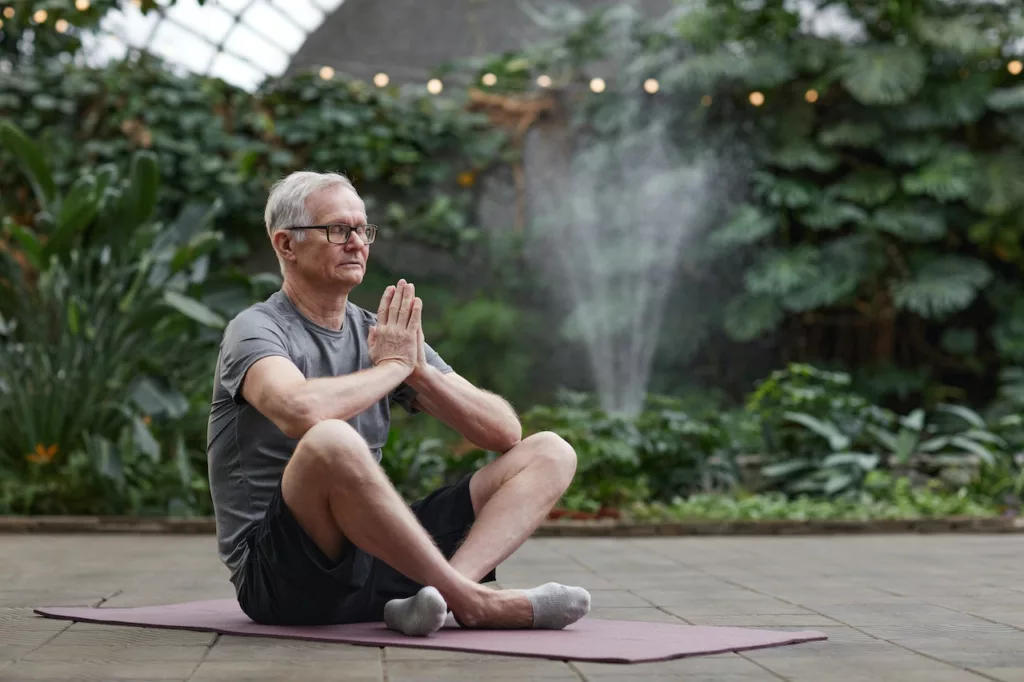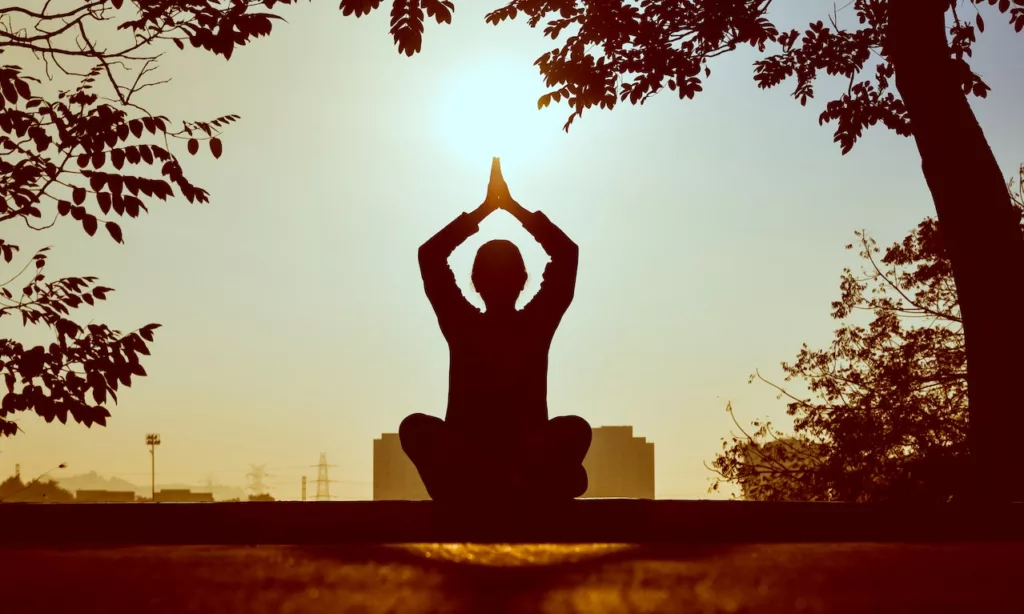
Some may think that mindfulness meditation is a fad or too difficult to practice. However, with the right attitude and commitment, it can be beneficial in many ways.
This article will explore the definition of mindfulness meditation, its associated benefits, how to get started and tips for establishing a regular practice.
Key Takeaways
- Mindfulness meditation reduces stress and improves focus.
- Improved mental clarity is achieved by calming the mind.
- Increased awareness for mindful eating and walking.
- Regular practice has physical benefits such as improved immune system functioning.
What Is Mindfulness Meditation
Mindfulness meditation is a practice of focusing your attention and awareness on the present moment, so you can better understand yourself and the world around you. It involves differentiating mindfulness from other forms of meditation. While traditional meditative practices involve emptying your mind, mindfulness emphasizes cultivating awareness instead.
Benefits of Mindfulness Meditation
Doin’ mindfulness has its rewards; it can help reduce stress and improve focus. Mindfulness meditation is the practice of being present in the moment, without judgement or attachment to any particular thought or emotion. It involves focusing on the breath, body sensations, sounds around you, and other aspects of your environment.
Practicing mindfulness has been shown to provide a range of benefits:
- Improved mental clarity by calming our ‘monkey mind’
- Increased awareness for mindful eating and walking
- Improved relationships by recognizing emotions in others more clearly
Mindful meditations are easy to learn and can fit into your daily life. With regular practice, you can start to notice changes in how you think and feel. Research also suggests that regular self-care practices like mindfulness meditation also have physical benefits such as improved immune system functioning.
Taking time for yourself each day is not selfish; it allows you to show up fully with an open heart for yourself and those around you.
How to Get Started With Mindfulness Meditation
Ready to get started with mindfulness meditation? All you need is a quiet place and comfortable clothing.
Mindfulness meditation can be done sitting in a chair or on the floor with your legs crossed. Relax your body by focusing on each of your muscles one at a time, starting from the feet and going up to the head.
Once relaxed, begin to focus on your breath. Concentrate on how it feels as it enters and leaves your body. If you find that thoughts start to creep in, acknowledge them but then let them go without judgment or attachment.
There are many calming techniques that can help guide you into deeper states of meditation such as guided meditations with calming music or visuals like candles or nature scenes.
With practice, mindfulness meditation can become an excellent way for relaxation and stress-relief.
Common Challenges With Mindfulness Meditation
One of the most common challenges with mindfulness meditation is staying focused on the present moment without getting caught up in thoughts. Practicing mindfulness can be difficult as it requires a high degree of mental discipline and can bring up unexpected emotions or feelings.
Many people struggle with focusing difficulty, emotional obstacles, and inner resistance when trying to practice mindfulness meditation.
Unwanted memories or intrusive thoughts can surface while meditating. Concentration may falter due to physical discomfort or mental distraction. Feelings of boredom or impatience may arise during long sessions.
In order to start benefiting from mindfulness meditation, it is important to understand these challenges and find ways to make them easier.
Moving forward, we’ll look at some tips for establishing a mindfulness meditation practice.
Tips for Establishing a Mindfulness Meditation Practice

Getting started with a mindfulness meditation practice can be challenging, but there are plenty of strategies to help.
Establishing a regular routine is key, as it will provide structure and consistency for your practice. Try to set aside the same amount of time each day – even fifteen minutes is enough – so that you can develop a relationship with your mindful moments.
Additionally, find a place in your home or outdoors that is comfortable and free from distractions; this way you can focus on calming benefits of meditation without being interrupted.
Lastly, make sure to have realistic expectations for yourself and be patient with your progress; remember that it takes time and effort to build up any new skill or habit.
With dedication and determination, you’ll soon be reaping the benefits of mindfulness meditation!
Frequently Asked Questions
What Are the Different Types of Mindfulness Meditation?
Exploring triggers and developing discipline, there are various forms of mindfulness meditation. Examples include breath awareness, body scan, loving-kindness, and mantra meditation.
How Long Should Each Mindfulness Meditation Session Last?
On average, mindful meditation sessions last 10-20 minutes, cultivating patience and reducing stress. However, beginners may wish to start with shorter periods of time and increase them gradually as they become more experienced.
Does Mindfulness Meditation Require Any Special Equipment?
No, mindfulness meditation does not require special equipment. It can be practiced in a variety of ways and styles, depending on one’s preferences and health effects desired.
Is There Scientific Evidence to Support the Benefits of Mindfulness Meditation?
Studies have found that mindfulness meditation can reduce stress by up to 39%, while calming the mind. It has been scientifically proven to improve mental and physical health, making it an effective tool for well-being.
Are There Any Risks Associated With Mindfulness Meditation?
Mental health and personal guidance must be considered when considering the risks associated with mindfulness meditation. While it has potential benefits, it can also have adverse effects if done incorrectly or without proper support.
Conclusion
In conclusion, mindfulness meditation is a powerful practice that can offer many benefits to practitioners.
It’s important to start slowly and be mindful of potential challenges along the way.
By utilizing techniques such as deep breathing, visualization, repetition of mantras, and being kind to yourself during difficult moments, you can establish a regular mindfulness meditation practice that will bring clarity and peace of mind.
Ultimately, it’s not about achieving perfection; it’s about learning how to appreciate the present moment – warts and all – with an open heart.
